As a certified Lucky Me Pancit Canton addict (yes, midnight snack goals), I never thought I'd graduate to making the real-deal Pancit Canton. But trust me, this recipe changed everything!
From my college days of mastering the 3-minute instant noodles to finally learning this authentic Pancit Canton recipe, I've discovered that homemade pancit is surprisingly easy yet absolutely restaurant-worthy.
It's all in the way we layer the proteins (I'm talking perfectly cooked hipon, tender pork, and those irresistible fish balls) and let those wheat noodles soak up all that sabaw goodness.
This authentic Filipino pancit canton recipe will make you feel like a true tito/tita in the kitchen. And unlike our favorite Lucky Me, this one's packed with fresh vegetables and that authentic "wok hei" flavor.
What is Pancit Canton?
Pancit Canton (pan-SIT kan-TON) is a beloved Filipino noodle dish that showcases the Chinese influence in Filipino cuisine. This hearty stir-fried noodle dish features wheat noodles (similar to lo mein) combined with an array of meat, seafood, and crisp vegetables in a savory sauce.
Jump to:

Why You'll Love This Recipe
- Authentic Flavors: Traditional Filipino-Chinese fusion recipe passed down through generations
- Restaurant Quality: Professional techniques for achieving "wok hei" (breath of the wok)
- Foolproof Method: Step-by-step instructions with timing for perfect texture every time
- Complete Guide: Includes Filipino translations, troubleshooting, and Lola's secret tips
- Versatile: Easy to customize with your preferred proteins and vegetables
Ingredients
This recipe combines proteins, vegetables, and noodles in perfect harmony. The mixture of pork, chicken, shrimp, and fish balls creates layers of flavor, while the colorful vegetables add crunch and nutrition.
The sauce ingredients create that signature savory-umami taste that defines authentic Pancit Canton. Each component plays an essential role in achieving the perfect balance of textures and flavors that makes this dish so beloved.

For the Noodles and Protein:
- 2 packages (16 oz total) pancit canton (wheat noodles)
- ¼ pound pork butt, thinly sliced
- ¼ pound boneless chicken thigh, thinly sliced
- 8 large shrimp, peeled and deveined
- 4 oz fish balls, halved
- 6 oz sweet hamonado longganisa or Chinese sausage, sliced
For the Vegetables:
- 1 medium onion, chopped
- 2 cloves garlic, minced
- 1 large carrot, julienned
- 8 snow peas
- ½ bunch Chinese celery (kinchay)
- 1 head napa cabbage, sliced
For the Sauce:
- 4 cups chicken broth
- 2 tablespoons oyster sauce
- 2 tablespoons soy sauce
- Salt and pepper to taste
- Canola oil for cooking
Equipment
- Wok or large skillet - Essential for achieving the high heat needed for "wok hei" flavor
- Tongs - For gently tossing noodles without breaking them
- Sharp knife - For precise cutting of meats and vegetables
- Cutting board - Preferably two: one for meat and one for vegetables
- Measuring cups and spoons - For accurate sauce proportions
- Large bowl - For soaking noodles if needed
- Colander - For draining noodles
- Small bowls - For organizing prepped ingredients
- Serving platter - Preferably oval or round for traditional presentation

How To Make
- Prepare all ingredients before cooking (mise en place): Slice the pork and chicken into thin, uniform strips, peel and devein the shrimp, halve the fish balls, and slice the Chinese sausage. Chop the onion, mince the garlic, julienne the carrots, trim the snow peas, prepare the Chinese celery, and slice the napa cabbage.
- Preheat your wok or large pan over high heat (around 400°F/200°C).
- Cook proteins separately: Pour 2 tablespoons of canola oil into the hot wok. Cook each protein individually, removing each to a clean plate after cooking:
- Shrimp: 2-3 minutes until pink
- Fish balls: 1 minute until heated through
- Longganisa: 1-2 minutes until crispy
- Pork: 2-3 minutes until no longer pink
- Chicken: 2-3 minutes until cooked through
- Create the flavor base: In the same wok, still on high heat, sauté garlic and onions until fragrant, about 30 seconds.
- Prepare the sauce: Pour in 4 cups of chicken broth and bring to a boil. Add oyster sauce and soy sauce, stirring to combine.
- Cook vegetables in stages: Add the carrots to the boiling mixture and cook for 1 minute. Add the cabbage and kinchay, cooking for another minute. Add the snow peas last and cook for just 30 seconds to maintain their crispness.
- Cook the noodles: Add the pancit canton noodles to the broth mixture, maintaining high heat. Gently toss the noodles (using tongs or chopsticks to prevent breakage) until they absorb the liquid.
- Combine and finish: Return all cooked proteins to the wok and toss everything together until well combined and heated through. Season with salt and pepper to taste.
- Serve: Transfer to a serving platter and serve hot with calamansi halves on the side.

Tips from Lola's Kitchen
- High heat is key: Always cook on high heat for authentic "wok hei" flavor. This smoky, charred essence is what separates restaurant-quality pancit from home versions.
- Prep everything first: Having all ingredients cut and ready before you start cooking makes the process smooth and prevents overcooking.
- Noodle preparation: If your noodles are too brittle, soak them briefly in room temperature water before cooking. This prevents breakage.
- Protein perfection: Cook proteins separately to ensure each is perfectly done. This extra step makes a huge difference in texture and flavor.
- Vegetable timing: Add vegetables in order of cooking time needed. Hard vegetables first, delicate ones last to maintain proper texture.
- Sauce absorption: Allow the noodles to fully absorb the sauce before serving. The noodles should be moist but not swimming in liquid.
- Tossing technique: Use tongs or chopsticks to gently lift and fold the noodles instead of stirring, which can break them.
- Final taste: Always adjust seasoning at the end. The noodles will absorb some salt as they cook, so final seasoning is important.
Substitutions
- Proteins: Substitute squid, beef, or tofu for any of the meats. For a vegetarian version, use firm tofu and vegetable broth.
- Noodles: If pancit canton noodles aren't available, use egg noodles or thick rice noodles (though this will change the dish to pancit bihon).
- Vegetables: Bell peppers, green beans, mushrooms, bean sprouts, or bok choy work well as alternatives.
- Sauces: If oyster sauce isn't available, use additional soy sauce with a pinch of sugar. For a vegetarian version, use mushroom sauce.
- Chinese celery: Regular celery plus some cilantro can approximate the flavor of Chinese celery (kinchay).
- Longganisa: Chinese sausage (lap cheong) or even chorizo can work in place of longganisa.
Troubleshooting
Soggy Noodles:
- Problem: Noodles are too soft and mushy
- Solution: Use less broth, keep heat high throughout cooking, and don't overcook the noodles. They should still have some bite to them.
Breaking Noodles:
- Problem: Noodles break apart during cooking
- Solution: Use tongs or chopsticks instead of spoons when tossing, handle gently, and ensure noodles aren't overcooked.
Dry Dish:
- Problem: The final dish is too dry
- Solution: Keep a small amount of hot broth ready to add if needed. Add gradually until desired moisture is achieved.
Unevenly Cooked Vegetables:
- Problem: Some vegetables are overcooked while others are undercooked
- Solution: Add vegetables in stages according to cooking time needed. Hard vegetables first, delicate ones last.
Bland Flavor:
- Problem: The dish lacks depth of flavor
- Solution: Make sure to develop flavor at each stage: brown proteins well, sauté aromatics until fragrant, and use good quality broth.
Storage & Reheating
- Refrigeration: Store in an airtight container in the refrigerator for up to 3 days.
- Best Consumption: For optimal flavor and texture, consume within 24 hours of cooking.
- Reheating Method: Reheat in a wok or skillet with a splash of water or broth to restore moisture. Heat until just hot to avoid overcooking.
- Not Recommended: Freezing is not recommended as the noodles and vegetables will lose their texture.
- Make Ahead Tips: If preparing for a party, slightly undercook the vegetables and noodles. They will finish cooking when reheated.

FAQ
Can I make Pancit Canton ahead for a party?
Yes, but slightly undercook the vegetables and noodles. Reheat with a splash of broth. For best results, prepare no more than 24 hours in advance.
Why is my pancit dry?
The noodles likely absorbed all the liquid. Add more broth gradually while reheating until you reach your desired consistency.
Is this gluten-free?
No, traditional wheat noodles contain gluten. For a gluten-free version, use rice noodles (turning it into Pancit Bihon) and ensure your soy sauce and oyster sauce are gluten-free varieties.
Can I make this vegetarian?
Yes! Substitute the proteins with firm tofu or mushrooms, use vegetable broth instead of chicken broth, and use mushroom sauce instead of oyster sauce.
What can I serve with Pancit Canton?
Traditional accompaniments include calamansi halves for squeezing over the noodles, puto (steamed rice cakes), or a side of chili vinegar. It's often served as part of a larger meal with dishes like lumpia (spring rolls) or lechon (roasted pork).
How can I tell when the noodles are perfectly cooked?
Perfectly cooked pancit canton noodles should be tender but still have a slight bite (similar to al dente pasta). They should have absorbed most of the liquid but still be moist, not dry or soggy.
What gives authentic Pancit Canton its distinctive flavor?
The "wok hei" or "breath of the wok" – that slightly smoky, charred flavor from cooking at very high heat – is what gives restaurant-quality Pancit Canton its distinctive taste. High heat cooking and proper sautéing of aromatics are key.
Can I double this recipe?
Yes, but you may need to cook in batches to maintain the high heat necessary for proper "wok hei" flavor. A crowded wok reduces temperature and leads to steaming rather than stir-frying.
Related
Looking for other recipes like this? Try these:

Authentic Filipino Pancit Canton Recipe (Pancit Canton Guisado)
Ingredients
For the Noodles and Protein
- 2 packages 16 oz total pancit canton (wheat noodles)
- ¼ pound pork butt thinly sliced (baboy)
- ¼ pound boneless chicken thigh thinly sliced (manok)
- 8 large shrimp peeled and deveined (hipon)
- 4 oz fish balls halved (bola-bola)
- 6 oz sweet hamonado longganisa or Chinese sausage sliced
For the Vegetables
- 1 medium onion chopped (sibuyas)
- 2 cloves garlic minced (bawang)
- 1 large carrot julienned (karot)
- 8 snow peas
- ½ bunch Chinese celery kinchay
- 1 head napa cabbage sliced (repolyo)
For the Sauce
- 4 cups chicken broth sabaw ng manok
- 2 tablespoons oyster sauce
- 2 tablespoons soy sauce toyo
- Salt and pepper to taste
- Canola oil for cooking
Instructions
- Start by preheating your wok or large pan over high heat (around 400°F/200°C). Prepare all ingredients before cooking (mise en place/paghahanda): slice the pork (baboy) and chicken (manok) into thin, uniform strips, peel and devein the shrimp (hipon), halve the fish balls (bola-bola), and slice the Chinese sausage. Chop the onion (sibuyas), mince the garlic (bawang), julienne the carrots (karot), trim the snow peas (sitsaro), prepare the Chinese celery (kinchay), and slice the napa cabbage (repolyo).
- Pour 2 tablespoons of canola oil into the hot wok. Cook the proteins separately, removing each to a clean plate after cooking: start with shrimp for 2-3 minutes until pink (hipon hanggang maging rosas), followed by fish balls for 1 minute until heated through, then longganisa for 1-2 minutes until crispy (hanggang malutong), pork for 2-3 minutes until no longer pink, and finally chicken for 2-3 minutes until cooked through.
- In the same wok, still on high heat, sauté garlic and onions (gisa ang bawang at sibuyas) until fragrant, about 30 seconds. Pour in 4 cups of chicken broth and bring to a boil. Add oyster sauce and soy sauce (toyo), stirring to combine.
- Add the carrots to the boiling mixture and cook for 1 minute. Add the cabbage and kinchay, cooking for another minute. Add the snow peas last and cook for just 30 seconds to maintain their crispness (hanggang malutong pa rin).
- Add the pancit canton noodles to the broth mixture, maintaining high heat. Gently toss the noodles (using tongs or chopsticks to prevent breakage) until they absorb the liquid (hanggang masipsip ang sabaw). Return all cooked proteins to the wok and toss everything together until well combined and heated through. Season with salt and pepper to taste (timplahan ng asin at paminta).
- Serve hot with calamansi halves on the side. For best results, consume within 24 hours. If storing, keep in an airtight container in the refrigerator for up to 3 days, reheating in a wok with a splash of water.
Tips from Lola's Kitchen
- Always use high heat for authentic "wok hei" flavor
- Soak noodles briefly in room temperature water if they're too brittle
- Don't overcook the vegetables - they should remain crisp
- Use tongs instead of spoons to prevent noodle breakage
Nutrition
The Story Behind Filipino Pancit Canton
Long before the bustling streets of modern Manila, Pancit Canton made its way to Philippine shores through Chinese merchants in the 9th century. These traders, known locally as "panciteros," introduced the art of noodle-making to the islands, forever changing Filipino cuisine. The word "pancit" itself comes from the Hokkien phrase "pian e sit," meaning "something conveniently cooked" – a testament to this dish's practical yet flavorful nature.
In Filipino culture, Pancit Canton isn't just another noodle dish – it's a symbol of long life and prosperity. This belief runs so deep that no Filipino birthday celebration is complete without a steaming platter of these wheat noodles. The long strands represent longevity, while the abundance of colorful ingredients symbolizes wealth and good fortune.
What sets Filipino Pancit Canton apart from other Asian noodle dishes is its unique adaptation to local tastes. While Chinese lo mein might have been its ancestor, Filipinos made it their own by incorporating native ingredients like calamansi and distinctly Filipino proteins such as sweet hamonado longganisa. The dish beautifully represents the Philippines' talent for absorbing foreign influences while creating something uniquely its own.
In every Filipino household, the recipe varies slightly – a testament to its versatility and the deeply personal nature of home cooking. Some families swear by their secret sauce ratio, while others have passed down specific techniques for achieving that perfect "tuyo-tuyo" (slightly dry) texture that marks an expertly cooked pancit. Whether prepared in the narrow streets of Binondo (Manila's Chinatown) or in modern Filipino-American kitchens, each plate tells a story of cultural exchange, family traditions, and culinary innovation.
Today, Pancit Canton stands as one of the Philippines' most beloved comfort foods, equally at home at lavish fiestas and simple family dinners. Its ability to feed a crowd while delivering complex flavors has made it a go-to dish for Filipino gatherings worldwide. From the traditional version loaded with pork and chicken to modern interpretations featuring seafood or vegetarian options, Pancit Canton continues to evolve while maintaining its essential character as a symbol of Filipino hospitality and celebration.
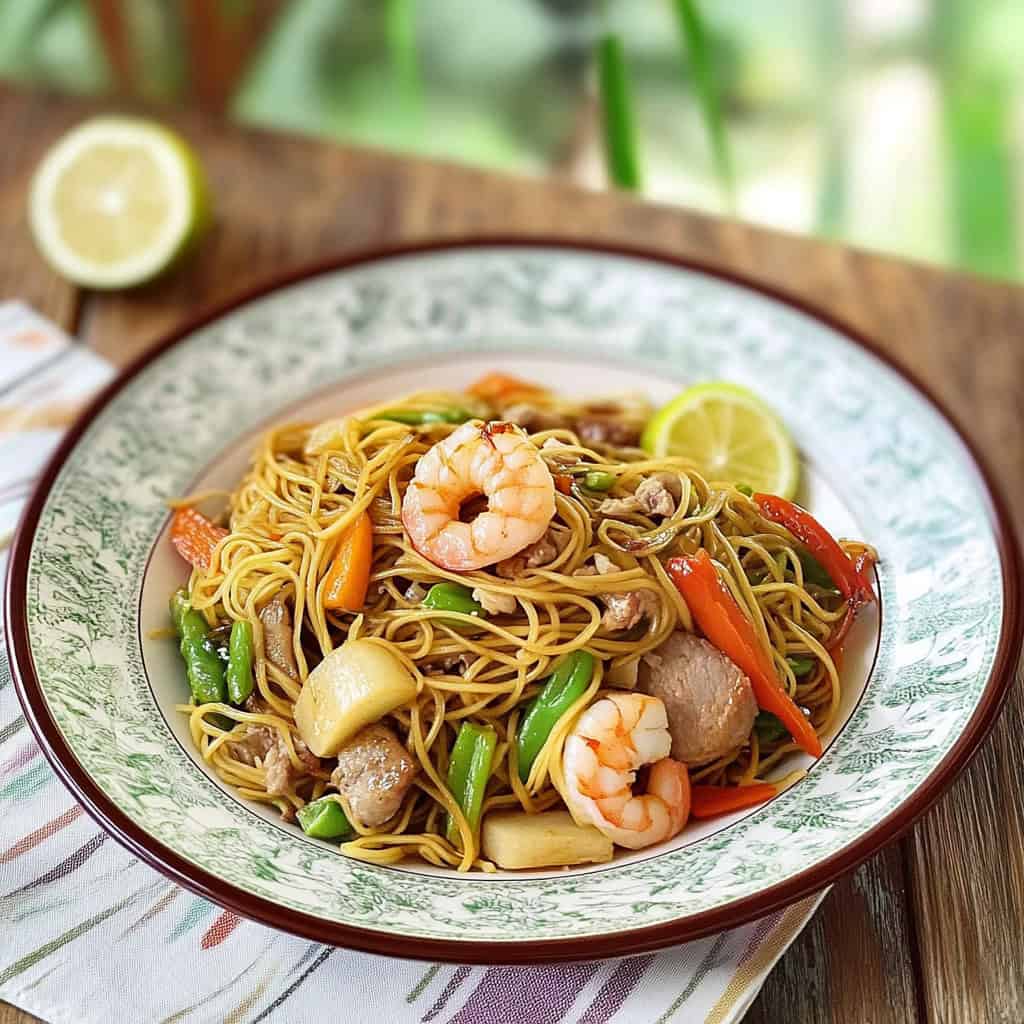





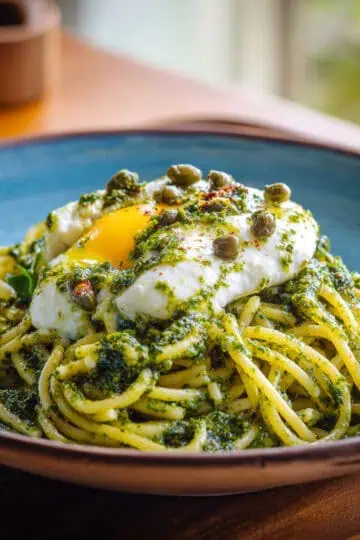
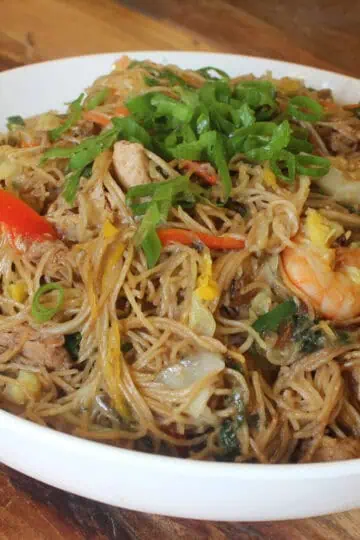
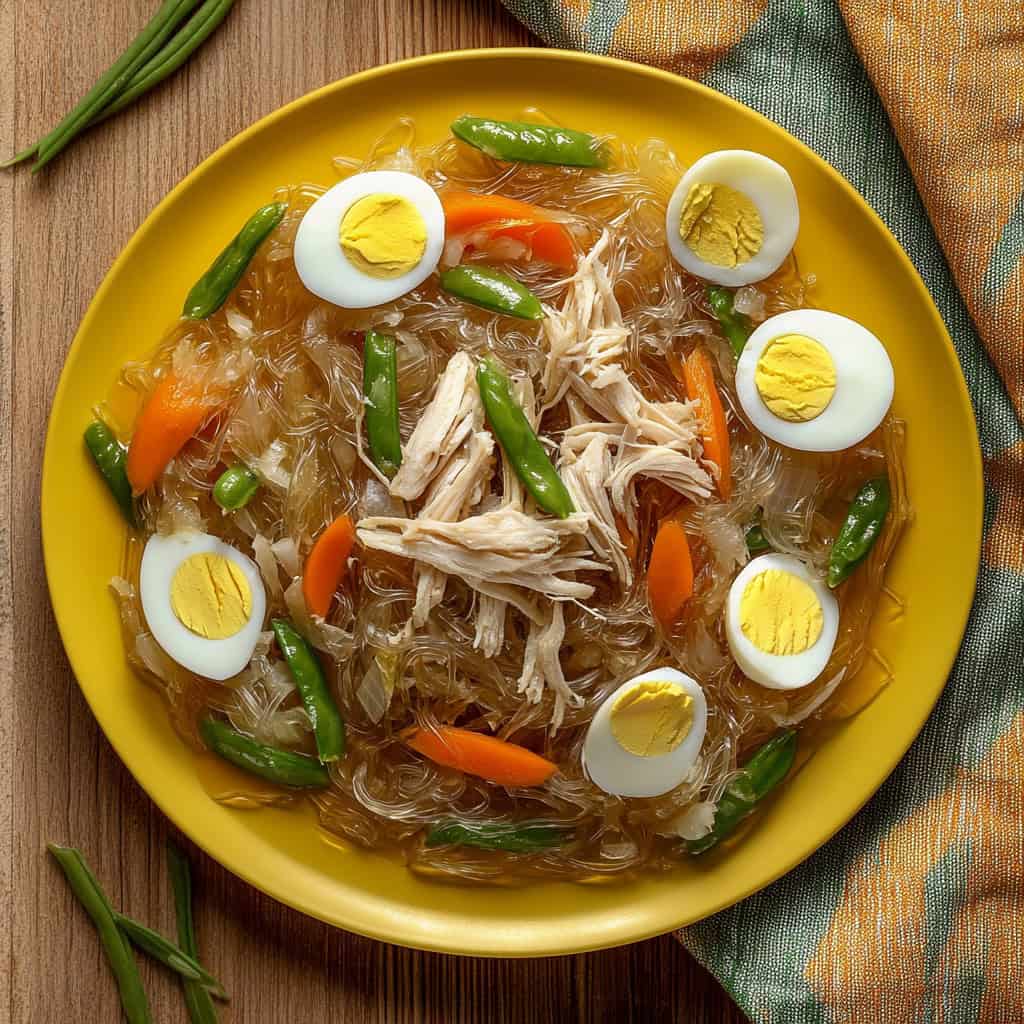
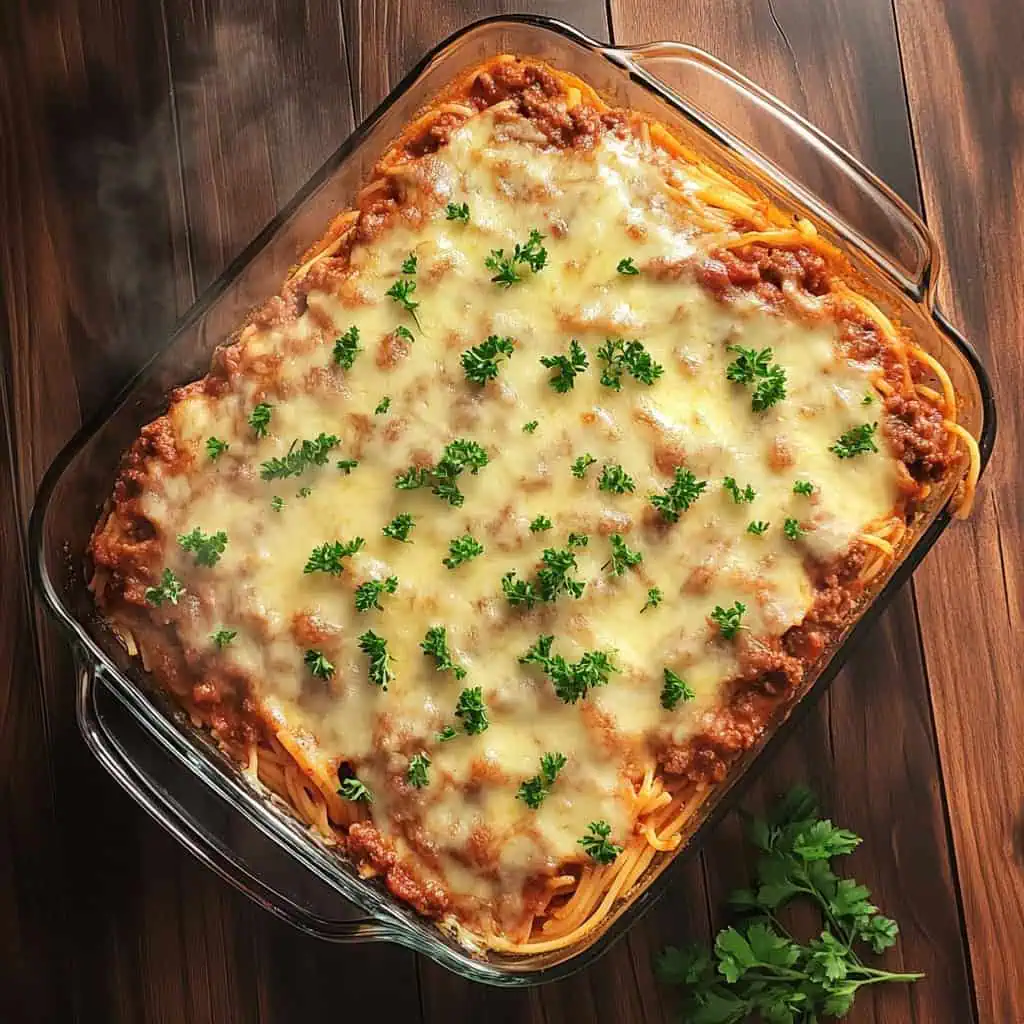
Comments
No Comments